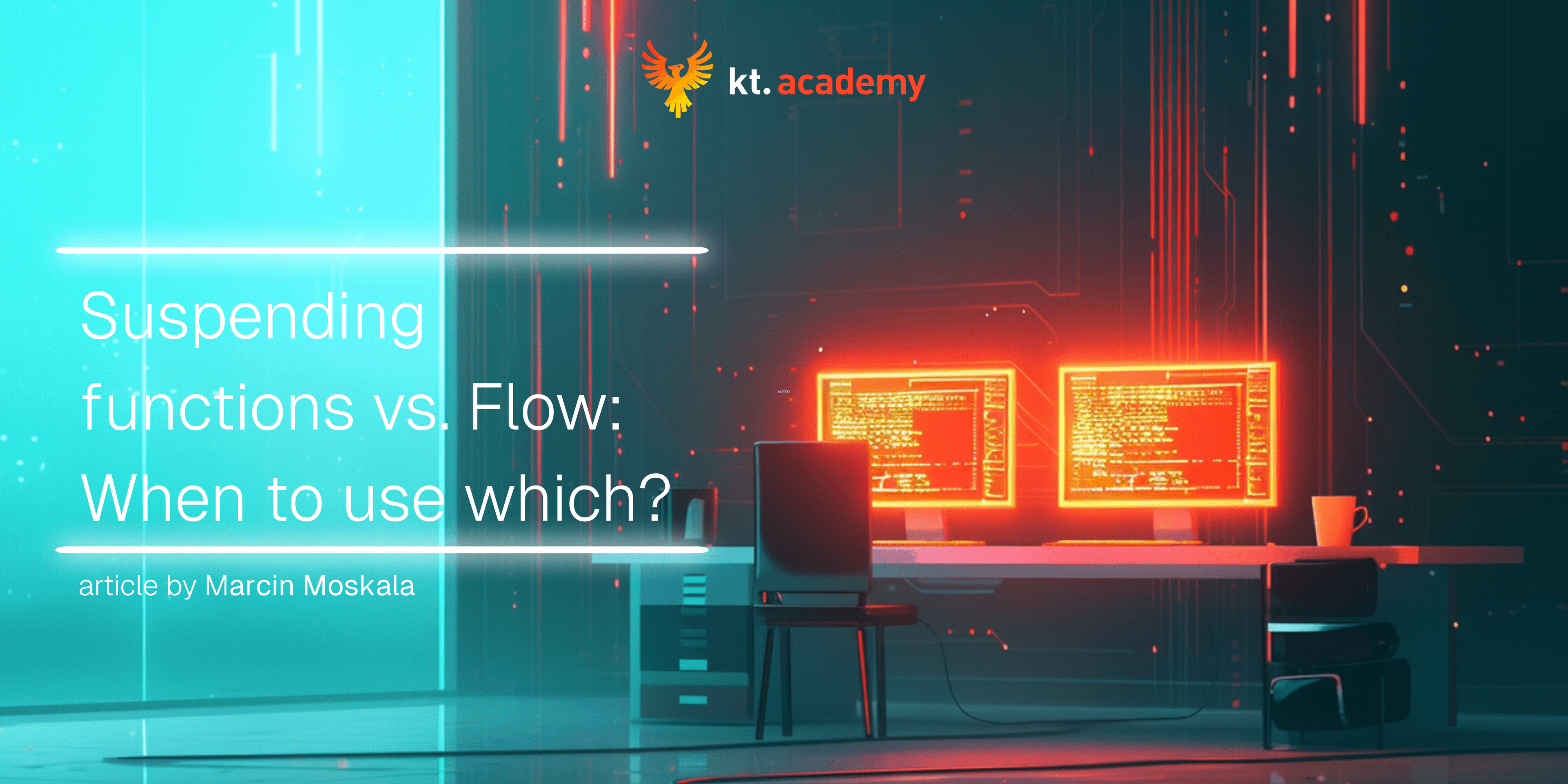Articles
Minimal setup for Compose Desktop
How to setup Compose to use it on desktop, for providing UI for scripts or a simple project/
Suspending functions vs. Flow: When to use which?
A comprehensive guide to understanding the differences between suspending functions and Flow in Kotlin Coroutines, and when to use each.
How to implement a random coroutines challenge generator
A behind-the-scenes look at how to implement a generator of interesting challenges for learning Kotlin Coroutines.
Discussing Kotlin Coroutines on Talking Kotlin Podcast
An insightful discussion about Kotlin Coroutines on the Talking Kotlin podcast.
Coroutines vs Reactor: When Elegance and Simplicity Crush Complexity
A comparison of Kotlin Coroutines and Reactor, highlighting the elegance and simplicity of Coroutines over the complexity of Reactor.
Suspending functions into blocking functions or CompletableFuture
A guide on how to correctly convert suspending functions into blocking functions or CompletableFuture in Kotlin Coroutines.
Kotlin Flow to RxJava or Reactor and vice versa
A guide on how to convert Kotlin Flow to RxJava or Reactor streams and vice versa.
Kotlin Coroutines and Swift
How to use Kotlin Coroutines in Swift projects, or Swift libraries from Kotlin Coroutines.
Kotlin Coroutines and JavaScript
How to use Kotlin Coroutines in JavaScript projects, or JavaScript libraries from Kotlin Coroutines.
runBlocking in practice: Where it should be used and where not
A comprehensive guide to using runBlocking in Kotlin Coroutines, including best practices and common pitfalls.
New Cohort of Kotlin Coroutines Experts
The grand goal of the Coroutines Mastery course.
Flow from suspending functions and vice versa
A guide on how to convert suspending functions to Flow and vice versa in Kotlin Coroutines.
Suspending functions or flows into callbacks
A guide on how to correctly convert suspending functions or flows into callback-based functions in Kotlin Coroutines.
Building Your First Kotlin Multiplatform App: From Setup to iOS App Store with Compose Multiplatform (2025 Guide)
A comprehensive guide to building your first Kotlin Multiplatform app using Compose Multiplatform, covering setup, development, and deployment
Calling blocking functions from suspending functions
A guide on how to correctly convert blocking functions into suspending functions in Kotlin Coroutines.
Loading more articles...














